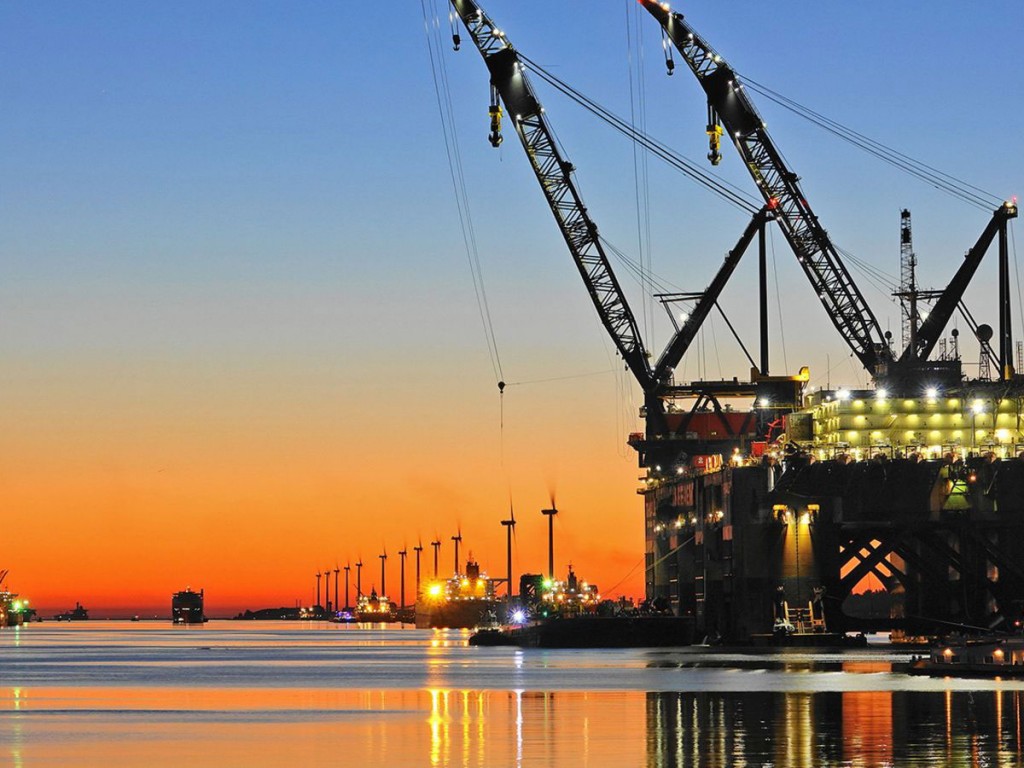The Port of Rotterdam is spearheading a number of European renewable energy projects that will reduce carbon emissions and energy costs, according to Nico van Dooren, new business director Port of Rotterdam.
In an interview with AJOT van Dooren described how a new green European ports’ collaboration will enhance renewable energy operations at Rotterdam and other European ports. The collaboration is called MAGPIE (sMArt Green Ports as Integrated Efficient multimodal hubs). Partners include the ports of Rotterdam, DeltaPort (Germany), HAROPA (France: La Havre, Rouen, Paris) and Sines (Portugal), in partnership with ten research institutions and over thirty companies in the Netherlands, Germany, France, Portugal and Denmark.
Van Dooren explained that an international alliance of 45 companies, knowledge institutes and port authorities, headed by the Port of Rotterdam, has been awarded nearly €25 million ($30.31 million) by the European Union. The consortium will be using this grant to execute 10 pilot projects and demonstration projects that focus on sustainable and smart logistics in port operations.
In addition, the Port of Rotterdam is working with various partners towards the introduction of a large-scale hydrogen network across the port complex, making Rotterdam an international hub for hydrogen production, import, application and transport to other countries in Northwest Europe. The hub will also enable Rotterdam to maintain its position as important energy port for Northwest Europe in the future.

Van Dooren described some of the MAGPIE projects:
Increasing availability of renewable fuels: An example is the production of LNG from renewable sources such as solar and feedstocks creating bio-LNG.
Shore powering a floating oil rig using renewable wind energy: The project will utilize power from an offshore windfarm and store that power in a battery. The storage in the battery will extend the time that renewable energy powers the oil rig while it is at the quay. Between projects, the rig is berthed at the Europoort area of the Port of Rotterdam.
Implementing digitization: The shore power project at Europoort will utilize an existing digitization system to optimize when renewable energy should go into the grid or provide shore power to the oil rig at Europoort. The software that will be used will link up with blockchain technology and artificial intelligence in order to calculate the most economically beneficial routing of the renewable energy. Digitization of the Port’s micro grids maximizes renewable energy use and saves the Port and its tenants money. The Port of Rotterdam has been testing a new energy platform: Distro. The Distro platform was developed by S&P Global Platts, a division of S&P Global, and Blocklab, a subsidiary of the Port of Rotterdam Authority that specializes in blockchain solutions. Thirty-two companies are utilizing the Distro software, according to a 2020 Port of Rotterdam press release. The release goes on to explain: “Working with solar panels and a battery, users trade energy they have produced themselves in a local market. The process utilizes blockchain technology, artificial intelligence and high-frequency commodity trading onto a single platform. The successful trial shows that it is possible to coordinate supply and demand in local markets 48 hours in advance through a platform on the basis of fair prices and transparent trading agreements. The new initiative helps companies in the port to reduce energy costs by making better use of locally produced electricity and by smoothing peaks in demand on the electricity grid. All this fits in with the climate goal of establishing a carbon-neutral port by 2050.” Artificial Intelligence “predicts the consumption and production patterns of individual electricity consumers, and trades kilowatt hours on the platform on the basis of those forecasts. The price of electricity fluctuates with changes in supply and demand. Batteries responding to price buy and store excess on-site solar energy that is generated when consumption levels are low, to re-sell it to users when solar generation is low. The results include a 92% local consumption of renewable energy and a 20% increase in return on investment for the battery. Additionally, the pilot demonstrated a 14% improvement in revenues for locally produced renewable energy, while lowering average prices for consumers.”
Deployment of a hybrid shunting locomotive: A locomotive containing a battery will utilize electricity from overhead wires to power the locomotive and charge the onboard battery. Where the electric wires end is where a diesel locomotive has been used to shunt railcars such as at marshalling yards. The new hybrid locomotive will replace one diesel-powered locomotive. The plan is to replace all diesel locomotives performing similar functions at the Port.
Deployment of an autonomous battery-powered self-propelled barge: This project is planned to move containers within the port using battery packs in corporation with Wartsila, the Finnish marine engine maker. This project is designed to begin with one battery-powered and autonomous barge within the Port and expand to more barges. The first barge will feature electric propulsion supplied through interchangeable battery-packs in containers. Warstila has developed this concept so that instead of charging the batteries on the vessel, the batteries are replaced with new batteries at the terminal. These packs are known as ZESPacks and are produced by Zero Emission Services, a partner with Wartsila. The partners also plan to deploy battery-packs on a fleet of manned barges operating to and from the Port of Rotterdam. The first service will begin this summer. The service is supported by a long-term contract with Heineken, the beer-maker which will ship 45,000 containers per year by battery-powered barge to the Port of Rotterdam.

Follow us on social media: